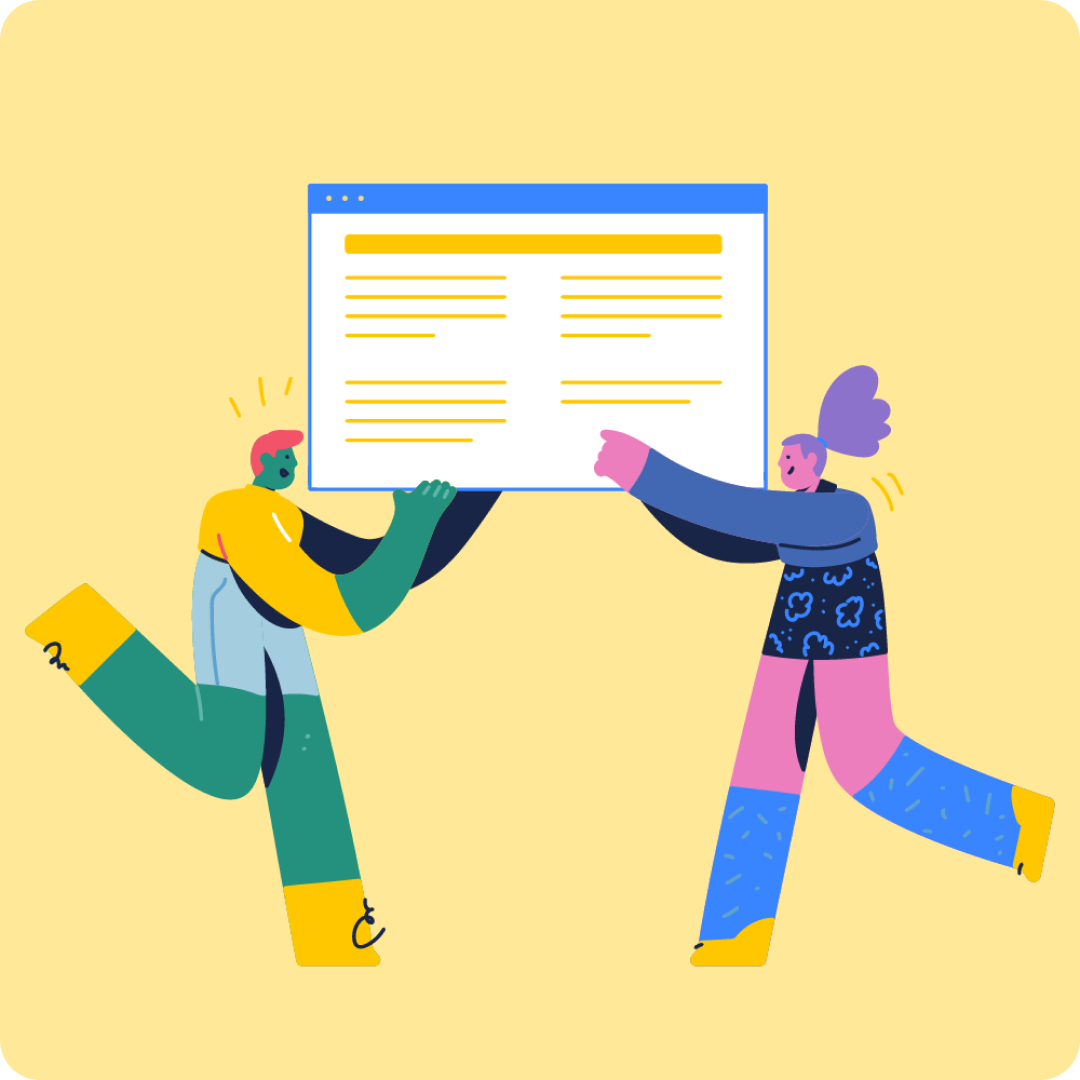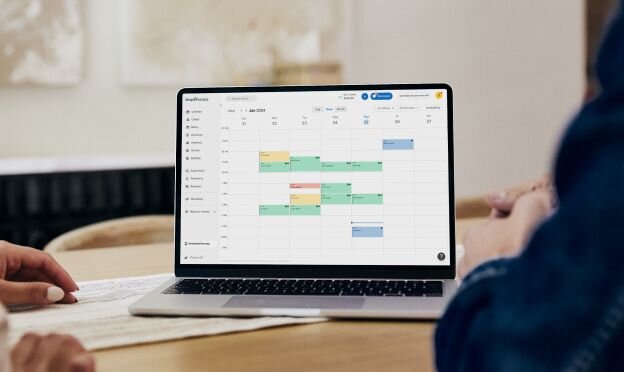Behavioral Activation Worksheet
Download the behavioral activation worksheet
Download free resource
Enter your email below to access this resource.
By entering your email address, you are opting-in to receive emails from SimplePractice on its various products, solutions, and/or offerings. Unsubscribe anytime.

Behavioral activation worksheets are a therapeutic tool that clinicians can use to help clients overcome mental health challenges.
These behavioral activation worksheets can be used as part of treatment for depression, or to reduce symptoms of anxiety.
This article explains the concept of activity scheduling and provides therapists with various activity ideas to support clients with depressive or anxiety disorders. We’ve also included a behavioral activation worksheet PDF that you can download and save to your electronic health record (EHR).
What is CBT behavioral activation?
Behavioral activation is a therapeutic approach used in cognitive behavioral therapy (CBT). Using certain behavioral activation techniques, this approach can target depression and other mental health disorders.
The purpose of behavioral activation is to motivate individuals to engage in activities that are aligned with their values and goals, even when they are feeling depressed or have low energy.
For example, let’s say Debbie broke up with her partner. She comes to therapy feeling heartbroken and depressed. In addition to experiencing a low mood, she might find herself wanting to socially withdraw and stay home.
Debbie speaks to her therapist, who uses a behavioral activation for depression PDF to increase engagement and identify activities that most appeal to Debbie. In turn, these activities provide mood-boosting rewards that motivate continued activity and eventually alleviate the symptoms of depression.
There are various approaches to behavioral activation, but the key components involve:
Understanding the cycles of depression
By looking at how certain circumstances can impact feelings and behavior, clients can see that staying in bed may worsen depression symptoms. Highlighting this may motivate the client to take steps to get out of the cycle of depression through behavioral activation.
Activity scheduling
Activity scheduling includes identifying and scheduling activities that boost mood and reduce depressive symptoms. You’ll find a list of different activity ideas in our printable behavioral activation worksheet and in the section below.
Activity monitoring
Through activity monitoring, clients track their daily activities and note their moods and depressive symptoms to identify whether patterns of behavior contribute to their depression or anxiety, or if an activity positively impacts their symptoms.
Addressing avoidance
Behavioral activation can help clients reduce the desire to avoid situations by encouraging them to engage in activities even if they aren’t feeling great. This can boost their mood and build distress tolerance skills.
Goal setting
The key to successful behavioral activation is to find activities that align with the client’s values and goals. This should provide a sense of accomplishment, ultimately alleviating their symptoms.
Benefits of using behavioral activation with clients
According to several studies, behavioral activation may be as effective as medication and other forms of CBT for treating depression, while others report more research is needed Still, behavioral activation is particularly useful because it is straightforward and easy to understand.
The key benefits of behavioral activation include:
- Improved mood: Engaging in meaningful activities can lift a person’s mood and reduce depressive symptoms.
- Breaks inactivity cycles: Behavioral activation promotes action even when motivation is low.
- Increases engagement: By aligning activities with values and goals, behavioral activation helps clients engage in pleasurable activities, which enhances quality of life and sense of purpose.
- Reduces avoidance: Reduces avoidant behaviors while building confidence and self-efficacy.
Examples of behavioral activation
Here’s a list of activities you can share with clients, which can also be found in the behavioral activation worksheet PDF:
Physical activities
- Walking or jogging, even for 10-15 minutes, can improve mood and increase energy levels.
- Yoga or stretching: Gentle yoga, like yin yoga or stretching, can reduce tension and promote relaxation.
- Dancing: Playing music at home and dancing can elevate mood and is a fun way to get moving.
Social activities
- Calling friends or family: Reaching out to a loved one to talk can reduce feelings of isolation and provide emotional support.
- Attending a community event is also a great way to socialize.
Volunteering
Helping others can provide a sense of purpose and fulfillment while also offering social interaction.
Pleasurable activities
- Listening to music provides enjoyment and may boost mood.
- Watching a favorite movie or TV show can provide distraction and even be soothing.
- Cooking: Preparing a favorite meal, trying a new recipe, or baking a cake can be rewarding and enjoyable.
Hobbies and creative activities
- Drawing, journaling, or crafting can be therapeutic and provide a sense of accomplishment.
- Gardening: Spending time outdoors and caring for plants can be calming and rejuvenating.
- Writing or journaling: Expressing thoughts and feelings through writing can help process emotions and provide a creative outlet.
Productive tasks
- Cleaning or organizing: Tidying up a living space can create a more pleasant home environment and provide a sense of control and accomplishment.
- Setting small goals: Breaking down tasks into small, achievable steps can make them feel less overwhelming and boost mood and confidence as each step is completed.
- Running errands: Completing necessary tasks like grocery shopping or paying bills can reduce stress and provide a sense of achievement.
Self-care activities
Self-care routines like bathing or taking a long shower can be relaxing and refreshing. This could also include going to a spa or hot springs.
Mindfulness meditation
Practicing meditation reduces stress and rumination, increases energy, and promotes a sense of calm.
Reading
Reading a book can provide a mental break and offer enjoyment or learning.
Exploring nature
- Going to a park, hiking, or simply sitting outside can improve mood and provide a sense of connection with nature.
- Birdwatching or photography: Observing and capturing nature can be a peaceful and rewarding activity. You could also join photography groups on social media to learn new skills and share your pictures for others to enjoy.
Planning fun events
- Planning a day out: This might include visiting a museum, trying a new restaurant, or taking a day trip can provide something to look forward to.
- Organizing a get-together: Planning a social event with friends or family can boost mood through anticipation, social connection, and provide something to look forward to.
How to use the behavioral activation worksheet
You can download our free behavioral activation worksheet PDF to use with clients in several ways:
- In session as a discussion prompt
- As a handout
- For homework
- To set value-based goals
- To review progress or adjust treatment planning
The behavioral activation worksheet contains a list of potential activities and a schedule for clients to plan their chosen activities.
Sources
- Moradveisi, L., Huibers, M. J. H., Renner, F., Arasteh, M., & Arntz, A. (2013). Behavioural activation v. antidepressant medication for treating depression in Iran: randomised trial. British Journal of Psychiatry.
- Richards, D. A., Ekers, D., McMillan, D., et al. (2016). Cost and Outcome of Behavioural Activation versus Cognitive Behavioural Therapy for Depression (COBRA): a randomized, controlled, non-inferiority trial. Lancet (London, England).
- Riebe, G., Fan, M. Y., Unützer, J., & Vannoy, S. (2012). Activity scheduling as a core component of effective care management for late-life depression. International journal of geriatric psychiatry.
- University of Michigan. (n.d.) Behavioral Activation for Depression.
How SimplePractice streamlines running your practice
SimplePractice is HIPAA-compliant practice management software with everything you need to run your practice built into the platform—from booking and scheduling to insurance and client billing.
If you’ve been considering switching to an EHR system, SimplePractice empowers you to streamline appointment bookings, reminders, and rescheduling and simplify the billing and coding process—so you get more time for the things that matter most to you.
Try SimplePractice free for 30 days. No credit card required.

